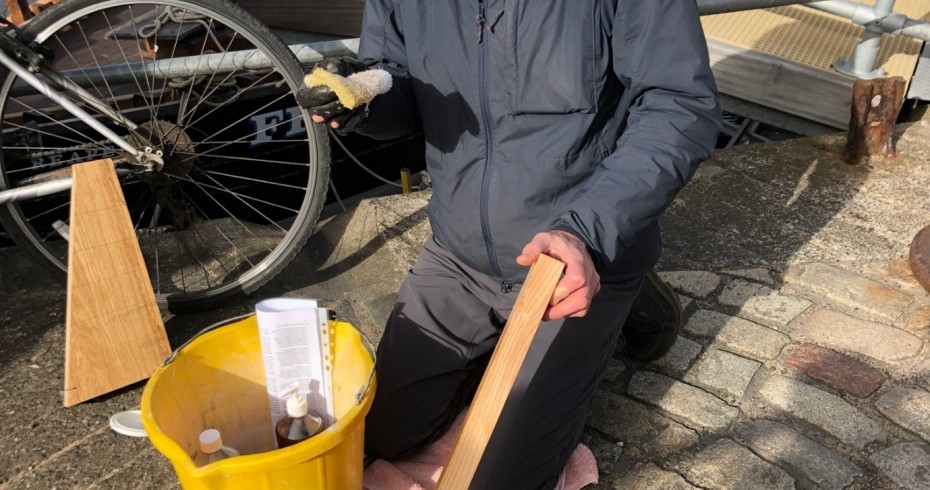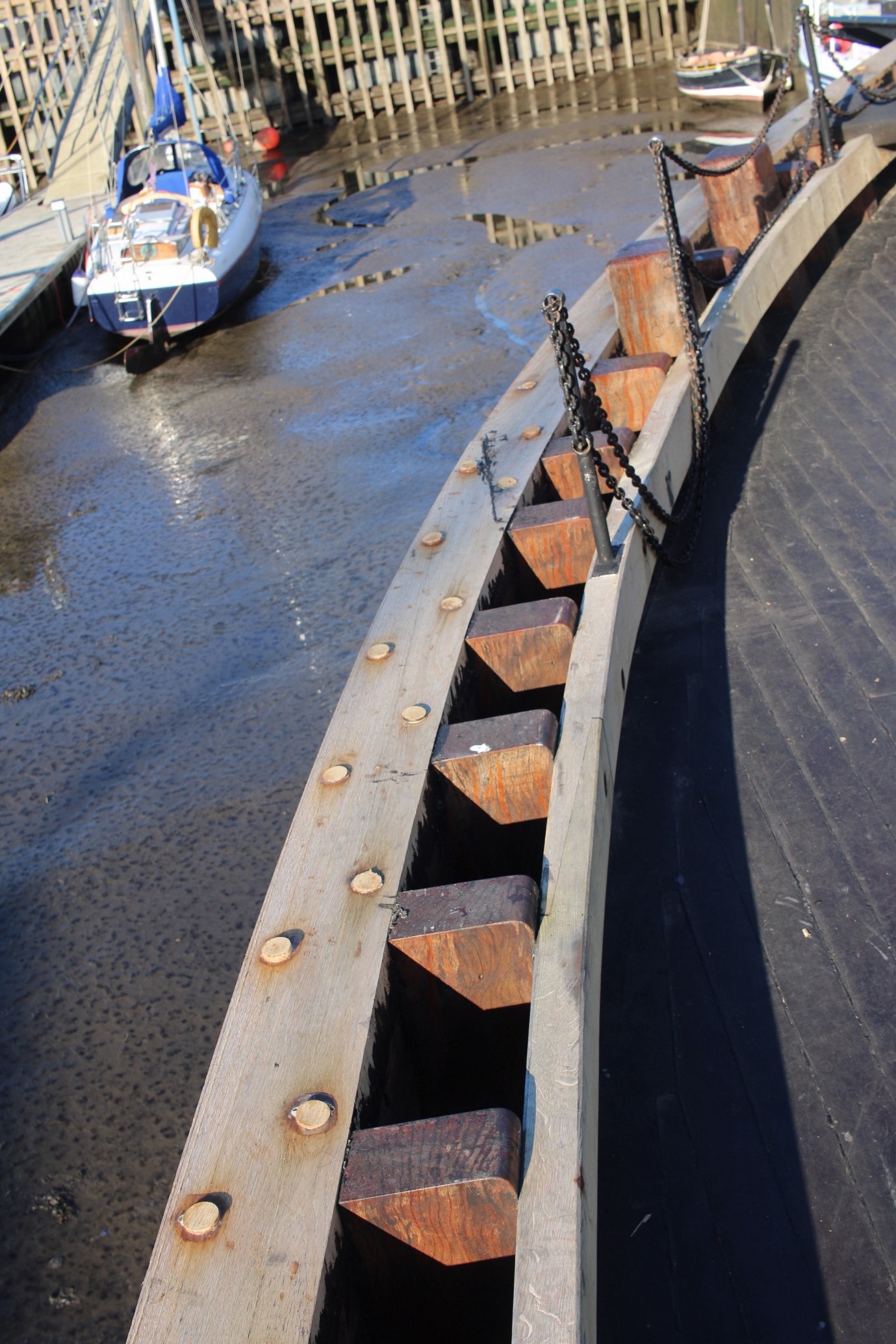Traditional materials are the best choice for Reaper

Preserving the wood and the appearance of the Museum’s Flagship vessel, Reaper, is a top priority for the Boats Club. There is a considerable range of options available, including materials that have been used for hundreds of years and modern petrochemical based substances developed since the Second World War.
Modern paints form a durable and impermeable coating on the surface of the wood. They dry rapidly through the process of evaporation of solvents and are available in a wide range of bright colours. Although modern paints protect the surface from external threats such as water, other chemicals and ultraviolet rays, water or oil that leaches out from within the wood can cause the paint to bubble up and lose adhesion.
 In restoring a historic vessel, the use of modern chemicals is inconsistent with historical authenticity. Sometimes, these chemicals can be justified if they enable preservation of parts of the historic fabric of the boat, which might otherwise have to be replaced entirely. But, when we can, we should opt for traditional, natural materials if they offer a durable solution, with perhaps less risk of release of toxic chemicals.
In restoring a historic vessel, the use of modern chemicals is inconsistent with historical authenticity. Sometimes, these chemicals can be justified if they enable preservation of parts of the historic fabric of the boat, which might otherwise have to be replaced entirely. But, when we can, we should opt for traditional, natural materials if they offer a durable solution, with perhaps less risk of release of toxic chemicals.
Linseed oil, which is extracted from flax seeds, has been used in ship building for centuries. It is composed mainly of polyunsaturated vegetable fats which (as well as being part of a healthy diet!) are effective in wood preservation. Linseed oil is absorbed into the pores of the wood, both visible and microscopic. This prevents the ingress of water, which is essential for rot to start, but allows evaporation of water from within.
Whereas modern paints harden by evaporation, linseed oil hardens through the chemical process of polymerisation. The fatty acids oxidise on exposure to air, binding together to form very large compounds which give a hard and somewhat shiny surface. With synthetics, up to 40% of the volume may be Volatile Organic Compounds (VOCs) which evaporate into the atmosphere and may be harmful to the ozone layer. Linseed oil contains very little of these substances so there is less environmental risk.
 Linseed oil alone has a mild yellow colour through which the beauty of the wood grain can be seen. Coloured pigments can be added to the linseed oil to produce paint.
Linseed oil alone has a mild yellow colour through which the beauty of the wood grain can be seen. Coloured pigments can be added to the linseed oil to produce paint.
Linseed oil products do not dry as rapidly as modern synthetic paints. Modern paints can be applied very quickly. If a boat is beached as the tide goes out, a coat of paint can dry before the boat floats on the next tide. This is not the case with linseed oil. Indeed, in some conditions, it may take days to dry.
Linseed oil is available as “raw” or “boiled”. Raw linseed oil is much slower to cure, so can effectively penetrate deep into the timber, but will remain oily and will not give a hard dry finish. “Boiled” linseed oil is not actually boiled but may be heat treated and/or contain a metallic catalyst. The result is a material which will dry and harden by polymerisation. Both formulations may be used for a particular application – raw followed by boiled, or a mixture of the two.
Boats Club Member, Donald MacDonald, has been experimenting with raw linseed oil on offcuts of oak and larch to assess its suitability as a wood treatment on Reaper. By applying one or two coats per week, Donald established whether the oil would dry. Finally, he applied some coats of boiled linseed oil-based paint.
The linseed oil has performed well, producing a dry and attractive finish. So the intention is to adopt linseed oil based products for future wood treatments on Reaper and thereby continue a tradition that was well known to the builders of Reaper in Sandhaven in 1902.

Images from top: Donald demonstrates the use of linseed oil; New timber on Reaper's rubbing strake and bearer need protective treatment; Oak offcut treated with several coats of linseed oil and paint; Sadie Crowther applying oil to the new bearer.

